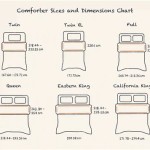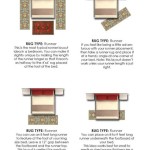When to Move Baby Bed From Crib
The transition from crib to bed is a significant milestone in a child's development. It signifies a step toward greater independence and autonomy. However, determining the right time to make this transition can be a source of anxiety for parents. There are numerous factors to consider, including the child's age, developmental stage, and individual readiness. This article provides a comprehensive guide to help parents navigate this process successfully.
Factors to Consider
Several factors can influence the appropriate time to move a baby's bed from a crib. These include:
- Age: While there's no set age for transitioning out of a crib, most children are ready between 18 months and 3 years old. However, some children may be ready earlier or later depending on their individual development.
- Height: Once a child is close to the height of the crib's top railing, they may be able to climb over it. This poses a safety concern, making it a good time to consider a bed. A good rule of thumb is to transition when your child reaches 90% of the crib’s height.
- Development: Some children may show signs of readiness before others, such as an interest in sleeping in a big bed, independence in getting ready for bed, or a desire for more space.
- Physical abilities: Look for signs that your child can safely get in and out of bed on their own without assistance. If they are showing signs of mobility and independence, this may be an indication they are ready.
- Behavioral changes: If your child is showing signs of difficulty sleeping in the crib, such as constant climbing or refusing to stay in the crib, a transition to a bed may be warranted.
Signs Your Baby is Ready
While age and height are helpful benchmarks, individual readiness plays a crucial role. Observe your child for these signs:
- Expresses interest in a big bed: Does your child mimic you or older siblings by trying to sleep on the couch or in a grown-up bed? This could be a sign of interest in a larger sleep space.
- Climbs out of the crib regularly: If your child consistently climbs out of the crib despite your efforts to keep them in, it might be time to consider a bigger bed.
- Shows independence in bedtime routines: Does your child demonstrate self-sufficiency in getting ready for bed, such as putting on pajamas or brushing their teeth? This can indicate a readiness for a new sleep environment.
- Comfortable with sleep-related activities: Observe if your child enjoys activities like reading bedtime stories or snuggling before bedtime. This suggests they are comfortable with routines that often accompany a transition to a bed.
Making the Transition Smooth
Transitioning from a crib to a bed can be a challenging process for both parents and children. It's crucial to make this change as smooth as possible. Here are some steps to help:
- Preparation: Introduce the new bed gradually by placing toys or books on it. Allow your child to spend time exploring and becoming familiar with the bed before actually sleeping on it.
- Consistency: Maintain a consistent bedtime routine to help your child establish a new sleep pattern in the new bed. Stick to your usual bedtime and wake-up time.
- Positive reinforcement: Praise and reward your child for sleeping in the new bed, even if it's only for a short period initially. Positive reinforcement can help solidify the new sleep arrangement.
- Nighttime checks: Be present and reassuring during the transition. Check on your child regularly during the night, but avoid picking them up or talking too much.
- Patience and understanding: The transition may take several nights to fully adjust. Be patient and understanding with your child as they adapt to the new environment.
While the transition from crib to bed can be a potentially exciting and positive step in your child's development, it's essential to understand the factors involved and approach this change with sensitivity and patience. By following these guidelines, parents can help their children navigate this milestone smoothly and confidently.

When To Transition From A Crib Toddler Bed

How To Move Your Child From Crib Toddler Bed Safely

Transitioning Your Toddler From Crib To Bed 2024 Lucie S List

Snüz How To Ease Your Baby S Transition From Crib Cot

10 Best Tips For Transitioning From Crib To Bed Busy Toddler

Moving Twins To Toddler Beds Ct Mommy Blog

How To Move From A Cot Bed Toddler Cuckooland

When To Transition Your Baby From Bassinet Cot

How Long Does A Baby Sleep In Bassinet When To Move Crib

Transitioning From Crib To Toddler Bed







